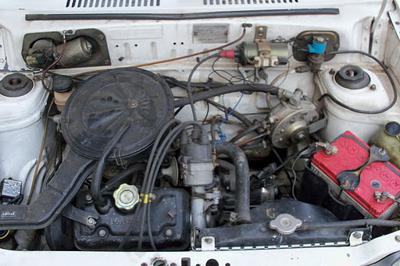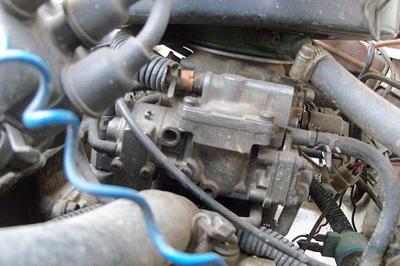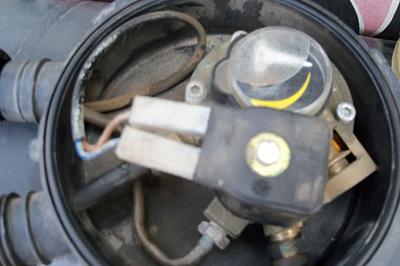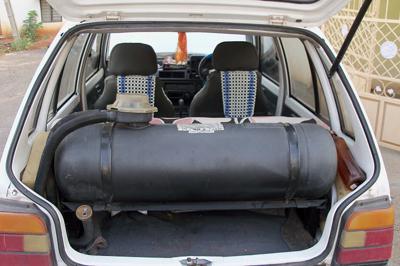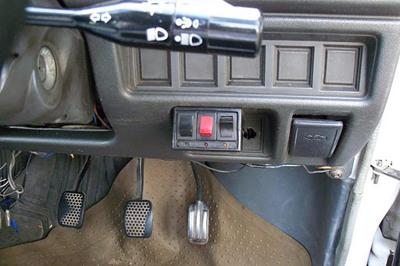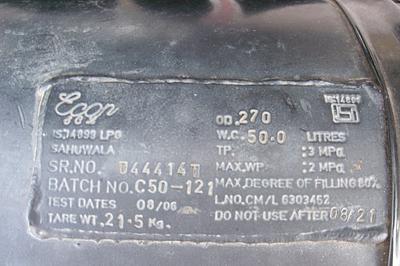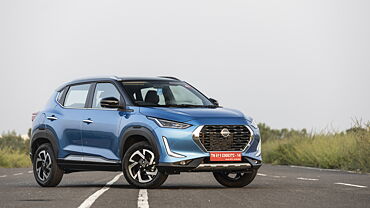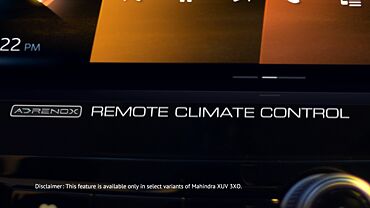To do or not to do?
Over the last years, India has seen a strong growth in the usage of LPG in the automobile space. Both in manufacturer equipped models and kits, LPG as a car fuel is now in common use.
Key drivers for the increased usage of LPG in cars have been a desire to reduce fuel costs, environmental considerations and a fundamental acceptance of LPG as a good alternative to petrol and diesel.
In today’s article, Shiva Shankar , auto engineer, takes a look at the workings, pros, and cons of the LPG engine. Do contact us with any questions and Shiva will be happy to help you.
What is LPG?
During the refining process of oil, several different components are extracted, ranging from near solid matter (tar), to liquid (petrol) to gaseous vapours.
LPG then, in its uncompressed form, is a mixture of these gases. It includes mostly propane and butane and is spiked with some odorant which can be used to identify leaks.
When storing this gas, it is compressed which turns it into a liquid. Thus, it is called as Liquefied Petroleus Gas.
Working of the LPG Engine
Theory
The working of an LPG engine is similar to that of a petrol engine. In the petrol engine, the car’s carburetor creates a mixture of petrol droplets and air which is then supplied to the inlet manifold of the car’s engine. A spark is then introduced, causing a controlled explosion which drives the engine.
LPG can be quite easily used in a petrol engine as well. In similar fashion as the petrol engine, when an LPG connection is made and given an inlet at the carburetor, the vapours of LPG (instead of droplets of petrol) get mixed with air and are then led into the combustion chamber, where the ignition process takes place as in the petrol version. A similar mechanism is employed in MPFI versions also.
Thus, a petrol engine can easily be ported to LPG as the combustion process is totally the same.
The body of research on petrol and diesel version engines is more advanced than on LPG engines. For example, detailed analysis of development of the combustion flame, travel modes, different mixture conditions etc. are available for the combustion process of petrol and diesel engines, whereas the same is limitedly available for LPG.
An important factor in an engine’s performance is the compression ratio. In a conventional petrol engine, the pressure of the fuel and air mixture is highest at the end of the compression stroke, which is further increased by the engine’s heat. As a result, the provision of spark leads to a rapid ignition. The high calorific value and energy density per unit volume of mixture leads to a powerful combustion, but adequate pressure is needed to ensure that enough fuel is available within that unit of volume.
If the engine is driven with petrol, droplets of petrol are introduced. However with LPG mode, the fuel component of the mixture is released in gaseous stage. In this case, the pressure becomes important to ensure enough fuel in the mixture. This is managed through temperature: a higher temperature of the fuel is desired, increasing pressure and thus ensuring adequate LPG quantity per volume of mixture.
Thus, in LPG there is a need of warming up of the engine so that there is enough heating of the fuel air mixture so as to allow for the start of combustion process. This is in fact the reason why in most of the LPG-kit fitted cars the engine is run for sometime in petrol mode and later switched over to LPG mode, so that the engine is warm enough.
Components and their function
Versus the petrol engine, an LPG equipped car adds a number of parts. The main components of the LPG kit are the Tank, Vaporizer, Solenoid Valves, Switch, pipe and hose connections.
The vaporizer is the heart of the LPG kit. This instrument essentially reduces the pressure of the LPG from its container, converting the liquid into gas, which is then passed directly into the carburetor.
The solenoid valves are two valves that regulate the flow of gas or petrol. These are electromagnetic devices that respectively stop the flow of petrol when the car is being run on LPG, and vice versa stops LPG flow when petrol is being used. It also stops the LPG flow when the engine is stopped.
The tank is a secured device that holds the pressurized LPG in its liquid form.
The Switch allows us to switch from petrol to LPG and vice versa.
Economics of LPG
A user typically will be inclined to use LPG to reduce his cost of running his car. Versus the reduced cost per kilometer, there is however an investment and maintenance implication. Let us take a look at the investment to run LPG and the benefits of the same.
Investment
When a user opts to implement an LPG kit in his car, the cost of the conversion kit will be around 15 to 18 thousand rupees. Even in company fitted LPG, we would expect a somewhat larger price hike versus the equivalent petrol version.
The investment is a onetime investment, after which the user can reap the benefits of the LPG.
Mileage and cost per KM
To evaluate the cost of driving an LPG car, two factors are important. First of all, the cost of a unit LPG and then the mileage of the LPG equipped car itself. Note that LPG is measured in cost per KG, as LPG, being a pressurized Gas, will have a different amount of actual fuel dependent on the pressure applied.
The cost per KG of LPG varies from state to state. For Bangalore, where we conducted our analysis, the present cost of LPG is at Rs 35 per KG.
The mileage of an LPG equipped car depends on the car itself. For a Maruti 800 LPG car in a very good condition, an LPG mileage of about 15 KM per KG was achieved by us in city usage which goes up to 17 KM/KG in long drives.
Thus, considering the cost of LPG, the cost per KM is about Rs 2.33.
Equivalently, if the same car is run on petrol mode, a mileage of about 18KMPL is achieved. Considering the cost of petrol at Rs 53 in Bangalore, the cost per KM with petrol would be Rs 2.94.
In effect, on a Maruti 800 on LPG, there is a saving of 64 paise per km which is a relative saving of 22%.
Maintenance
The maintenance of an LPG car is similar to a petrol version in most aspects –since most all components are the same. Of course, particular attention has to be given for maintaining the tank, valves and pipe connection in a very good condition. As a result, the maintenance of an LPG car will always be higher than that of a petrol car.
While using an LPG kit there exists an occurrence of problems such as starting problems and jerks. After a long term usage, the rings could get worn out, which results quickly into misaligned pressure of injected gas. The remedy is to get the rings replaced, which would mean a major repair.
The main message in owning an LPG car is to give it for servicing at regular intervals, thus avoiding major repairs to your LPG kit.
Still, we can assume some Rs 5,000 incremental maintenance cost in owning an LPG car per year.
Evaluation
The useful and productive life on an LPG kit is about 4 years. Hence the total outlay assumed should be about Rs 15,000 for the kit, plus 4 times Rs 5,000 for the maintenance – a total of Rs. 35,000.
This means that one needs to drive at least Rs. 35,000 / Rs 0.64 = 55,000 KMs over the four years to recoup the cost, which is about 14,000 KM per year.
Hence, economically, we can state that LPG is useful for drivers driving more than 14,000 KM per year (for a Maruti 800).
Safety and precautions
A major deterrent for people to use LPG in the past has been safety concerns. Let us take a look at the safety factor of LPG.
Though in general LPG fitted cars – be it company fitted or individually – are certified and RTO approved, there have been stray incidents of bursting of these LPG cars.
However, on inspection it has always been shown that that those accidents had occurred with domestic gas fitment, and not with kitted cars. It is clearly very dangerous to use domestic LPG cylinders for running cars – it’s not only illegal but can also turn out to be fatal. At the same time, clearly, there is no major safety concern as such when running a properly equipped car.
Nevertheless, the foremost thing to take care while using LPG is leakage. The source of leakage could be from the filter provided over the tank, the solenoid switch, and the pipelines. Generally, pipelines from the rear tank are taken through side panels inside the compartment, to avoid damage in pipe due to hitting of potholes, stones etc. Any regular maintenance carried out will involve a full examination of these components for leakage.
Note that LPG comes with an added odour. Hence, as precautionary measure in case of any smell, immediately disengage the engine to stop the flow of LPG and call authorities for immediate rectification of problem.
Driving Experience
Driving a car fitted with LPG kit though quite similar to a petrol car, comes with some interesting quirks and a certain procedure should be followed for better utilization.
First start the car with petrol and run for few minutes, so that the engine gets warmed up. Then switch off the petrol switch, so that petrol supply is cut off. Now the engine will run for a few minutes with petrol left in the carburetor. At that point, you can disengage the engine and switch on again with LPG connection and start the engine.
While driving with LPG mode, the engine performance won’t be as comfortable as with Petrol. You can feel a lack of power and pickup. However, the running of engine becomes smoother as the engine gets warmed up completely. The estimated loss of power in an LPG engine is about 10%, resulting in a reduction of top speed of 3% and reduced acceleration.
An important point to be kept in mind is that if you are going for long drives, ensure that the LPG tank is full and be aware of next LPG filling station available on route. Also, it will be good to keep sufficient store of petrol to use in case of emergency. However, in reality, in cities LPG is now abundantly available, and even in the rural areas, it is available regularly. This is also related to the huge number of rickshaws plying on LPG.
However, in general, except for some behavioral changes you need not be concerned too much with using LPG.
Environment
Another consideration in using LPG is the environment. In general, using LPG as a fuel is considered better for the environment. This is because the combustion of LPG is more complete and efficient than petrol fuel, which means that the amount of carbon monoxide and hydrocarbons is much less. The emission of an LPG engine would typically be just carbon dioxide and water, which are relatively harmless for the environment.
Getting an LPG car
Made up your mind to drive on LPG? There are basically two routes to do this – either buy an LPG car from the dealership directly, in which the car manufacturer has equipped the LPG – or get a kit separately to have installed.
Company Fitted LPG cars
With the success rate of LPG kits and growing demand for the same, manufacturers have realized importance of capturing the LPG market by coming up with their own ‘DUO’ version car, which give confidence to customer due to higher safety norms and warranty for the same.
As such, Maruti Suzuki has introduced duo versions of the 800, Omni, and Wagon R. Hyundai has the Santro and Accent in Duo versions, while GM has its Spark LPG. Another important car is the Tata Motors Indica Xeta DUO.
Note that in the northern region LPG is not available, and instead, CNG might be used in the car.
The advantages of going for DUO version cars include safety, guaranty and warranty backup. In LPG kits fitted directly from suppliers, if any problems arises in engine, dealers will service it. However, most of the time dealers reject to give warranty service for the self-kitted cars.
LPG Kit suppliers
There are a number of suppliers of LPG car kits. Autogasindia is one of the most famous gas kit suppliers in India, and they are offering government approved Lovato Kits from Italy.
Haryana based Techlab Autogas also offers autogas kits for all cars.
The most compelling reason to go for a kit like this, is in case you already have a car which you want to upgrade, or the desired car does not come with a factory fitted kit.
However, you must accept that dealerships may not service your car anymore, and potentially higher safety risk.
Conclusion
Using an LPG car has become a well known method of saving money spent on fuels. However considering the investment cost of around Rs 15,000 and the increased maintenance, a driver needs to make significant kilometers to have financial benefit of the LPG. Combined with the continuing – though unfounded – safety concerns, these are factors contributing to LPG versions not being as popular as petrol and diesel versions. Some hassles surrounding usage also deter people, such as less power and starting problems.
However, LPG as a fuel is very environment friendly, and in practice, the mental roadblocks in using LPG are not really significant.
Hence, for those heavy drivers who care about the environment, LPG is the way to go. However, you must opt for factory fitted LPG, as kits have too many practical issues surrounding them.
Thank you for reading this article by Shiva Shankar. Are you an LPG owner? Please share your experiences with us.
Also, if you have any questions, do feel free to ask.
Finally, Shiva had earlier written an article comparing all fuel types. We recommend readers to check out the earlier article on Petrol-Diesel-LPG-CNG fuel version selection.



